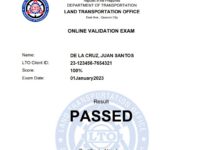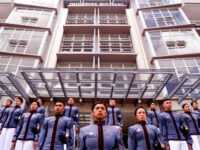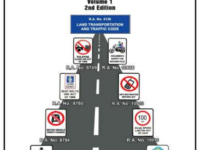- Insufficient centrifugation will result in:
A. A false increase in hematocrit (Hct) value
B. A false decrease in Hct value
C. No effect on Hct value
D. All of these options, depending on the patient
Hematology/Apply principles of basic laboratory procedures/Microscopic
morphology/Differential/2 - Variation in red blood cell (RBC) size observed on the peripheral blood smear is
described as:
A. Anisocytosis
B. Hypochromia
C. Poikilocytosis
D. Pleocytosis
Hematology/Apply knowledge of fundamental biological characteristics/Microscopic
morphology/RBCs/1 - Which of the following is the preferred site for bone marrow aspiration and biopsy in an
adult?
A. Iliac crest
B. Sternum
C. Tibia
D. Spinous processes of a vertebra
Hematology/Apply knowledge of fundamental biological characteristics/Bone marrow/1 - Mean cell volume (MCV) is calculated by using the following formula:
A. (Hgb ÷ RBC) × 10 where Hgb is hemoglobin in g/dL
B. (Hct ÷ RBC) × 10
C. (Hct ÷ Hgb) × 100
D. (Hgb ÷ RBC) × 100
Hematology/Calculate/RBC indices/2 - What term describes the change in shape of erythrocytes seen on a Wright-stained
peripheral blood smear?
A. Poikilocytosis
B. Anisocytosis
C. Hypochromia
D. Polychromasia
Hematology/Apply knowledge of fundamental biological characteristics/Microscopic
morphology/RBCs/1 - Calculate the mean cell hemoglobin concentration (MCHC) by using the following
values:
Hgb: 15 g/dL (150 g/L) Hct: 47 mL/dL (0.47)
RBC: 4.50 × 106/µL (4.50 × 1012/L)
A. 9.5% (0.095)
B. 10.4% (0.104)
C. 31.9% (0.319)
D. 33.3% (0.333)
Hematology/Calculate/RBC indices/2 - A manual white blood cell (WBC) count was performed. In total 36 cells were counted in
all 9-mm2 squares of a Neubauer-ruled hemacytometer. A 1:10 dilution was used. What
is the WBC count?
A. 0.4 × 109/L
B. 2.5 × 109/L
C. 4.0 × 109/L
D. 8.0 × 109/L
Hematology/Calculate/Manual WBCs/2 - When an erythrocyte containing iron granules is stained with Prussian blue, the cell is
called a:
A. Spherocyte
B. Leptocyte
C. Schistocyte
D. Siderocyte
Hematology/Apply knowledge of fundamental biological characteristics/RBCs microscopic
morphology/Stain/1 - A 7.0-mL ethylenediaminetetraacetic acid (EDTA) tube is received in the laboratory
containing only 2.0 mL of blood. If the laboratory is using manual techniques, which of
the following tests will most likely be erroneous?
A. RBC count
B. Hgb
C. Hct
D. WBC count
Hematology/Apply knowledge to identify sources of error/Specimen collection and
handling/CBC/3 - A 1:200 dilution of a patient’s sample was made, and 336 RBCs were counted in an area
of 0.2 mm2. What is the RBC count?
A. 1.68 × 1012/L
B. 3.36 × 1012/L
C. 4.47 × 1012/L
D. 6.66 × 1012/L
Hematology/Calculate/Manual RBCs/2 - What phagocytic cells produce lysozymes that are bacteriocidal?
A. Eosinophils
B. Lymphocytes
C. Platelets (PLTs)
D. Neutrophils
Hematology/Apply knowledge of fundamental biological characteristics/Leukocytes/1 - If a patient has a reticulocyte count of 7% and Hct of 20%, what is the corrected
reticulocyte count?
A. 1.4%
B. 3.1%
C. 3.5%
D. 14%
Hematology/Apply principles of basic laboratory procedures/Calculate/Reticulocytes/2 - A decreased osmotic fragility test would be associated with which of the following
conditions?
A. Sickle cell anemia
B. Hereditary spherocytosis (HS)
C. Hemolytic disease of the fetus and newborn
D. Acquired hemolytic anemia
Hematology/Apply principles of basic laboratory procedures/RBCs/Osmotic fragility/2 - What effect would using a buffer at pH 6.0 have on a Wright-stained smear?
A. RBCs would be stained too pink
B. WBC cytoplasm would be stained too blue
C. RBCs would be stained too blue
D. RBCs would lyse on the slide
Hematology/Evaluate laboratory data to recognize problems/Microscopic
morphology/Stains/2 - Which of the following erythrocyte inclusions can be visualized with supravital stain
but cannot be detected on a Wright-stained blood smear?
A. Basophilic stippling
B. Heinz bodies
C. Howell–Jolly bodies
D. Siderotic granules
Hematology/Apply principles of basic laboratory procedures/Microscopic morphology/RBC
inclusions/2 - A falsely elevated Hct is obtained. Which of the following calculated values will not be
affected?
A. MCV
B. Mean corpuscular hemoglobin (MCH)
C. MCHC
D. Red blood cell distribution width (RDW) Hematology/Evaluate sources of
error/Microhematocrit/3 - A Miller disk is an ocular device used to facilitate counting of:
A. PLT
B. Reticulocytes
C. Sickle cells
D. Nucleated red blood cells (NRBCs)
Hematology/Apply knowledge of standard operating procedures/Manual counts/1 - SITUATION: RBC indices obtained on an anemic patient are as follows: MCV 88 μm3
(fL); MCH 30 pg; MCHC 34% (0.340). The RBCs on the peripheral blood smear would
appear:
A. Microcytic, hypochromic
B. Microcytic, normochromic
C. Normocytic, normochromic
D. Normocytic, hypochromic
Hematology/Evaluate laboratory data to recognize health and disease states/RBC indices/2 - All of the following factors may influence the erythrocyte sedimentation rate (ESR)
except:
A. Blood drawn into a sodium citrate tube
B. Anisocytosis, poikilocytosis
C. Plasma proteins
D. Caliber of the tube
Hematology/Apply principles of basic laboratory procedures/ESRs/2 - What staining method is used most frequently to stain and manually count
reticulocytes?
A. Immunofluorescence
B. Supravital staining
C. Romanowsky staining
D. Cytochemical staining
Hematology/Apply knowledge of standard operating procedures/Reticulocytes/1 - The Coulter principle for counting of cells is based on the fact that:
A. Isotonic solutions conduct electricity better than cells do
B. Conductivity varies proportionally to the number of cells
C. Cells conduct electricity better than saline does
D. Isotonic solutions cannot conduct electricity
Hematology/Apply principles of basic laboratory procedures/Instrumentation/Cell counters/2 - A correction is necessary for WBC counts when NRBCs are seen on the peripheral
blood smear because:
A. The WBC count would be falsely lower
B. The RBC count is too low
C. NRBCs are counted as leukocytes
D. NRBCs are confused with giant PLTs
Hematology/Evaluate laboratory data to take corrective action according to predetermined
criteria/Leukocytes/2 - Using an electronic cell counter analyzer, an increased RDW should correlate with:
A. Spherocytosis
B. Anisocytosis
C. Leukocytosis
D. Presence of NRBCs
Hematology/Correlate laboratory data with other laboratory data to assess test results/RBC
microscopic morphology/2 - Given the following values, which set of RBC indices suggests spherocytosis?
A. MCV 76 μm3 MCH 19.9 pg MCHC 28.5%
B. MCV 90 μm3 MCH 30.5 pg MCHC 32.5%
C. MCV 80 μm3 MCH 36.5 pg MCHC 39.0%
D. MCV 81 μm3 MCH 29.0 pg MCHC 34.8%
Hematology/Evaluate laboratory data to recognize health and disease states/RBC indices/3 - Which of the following statistical terms reflects the best index of precision when
comparing two complete blood count (CBC) parameters?
A. Mean
B. Median
C. Coefficient of variation
D. Standard deviation
Hematology/Correlate laboratory data with other laboratory data to assess test
results/QC/Statistics/2 - Which of the following is considered a normal Hgb?
A. Carboxyhemoglobin
B. Methemoglobin
C. Sulfhemoglobin
D. Deoxyhemoglobin
Hematology/Apply knowledge of fundamental biological characteristics/Hemoglobin/1 - Which condition will shift the oxyhemoglobin dissociation curve to the right?
A. Acidosis
B. Alkalosis
C. Multiple blood transfusions
D. Increased quantities of Hgb S or C
Hematology/Correlate laboratory data with other laboratory data to assess test
results/RBCs/Metabolism/2 - What is the major type of leukocyte seen in the peripheral blood smear from a patient
with aplastic anemia?
A. Segmented neutrophil
B. Lymphocyte
C. Monocyte
D. Eosinophil
Hematology/Correlate clinical and laboratory data/Leukocytes/Aplastic anemia/1 - What is the normal WBC differential lymphocyte percentage (range) in the adult
population?
A. 5%–10%
B. 10%–20%
C. 20%–44%
D. 50%–70%
Hematology/Correlate basic laboratory values/Differentials/1 - In which age group would 60% lymphocytes be a normal finding?
A. 6 months–2 years
B. 4–6 years
C. 11–15 years
D. 40–60 years
Hematology/Evaluate laboratory data/Differentials/2 - Which of the following results on an automated differential suggests that a peripheral
blood smear should be reviewed manually?
A. Segs = 70%
B. Band = 6%
C. Mono = 15%
D. Eos = 2%
Hematology/Correlate laboratory data/Instrumentation/2 - Which is the first stage of erythrocytic maturation in which the cytoplasm is pink
because of the formation of Hgb?
A. Reticulocyte
B. Pronormoblast
C. Basophilic normoblast
D. Polychromatic normoblast
Hematology/Apply knowledge of fundamental biological characteristics/Microscopic
morphology/1 - Which of the following can shift the Hgb oxygen (O2) dissociation curve to the right?
A. Increases in 2,3 DPG
B. Acidosis
C. Hypoxia
D. All of these options
Hematology/Evaluate laboratory data to recognize health and disease states/O2 dissociation
curves/2 - Which of the following Hgb configurations is characteristic of Hgb H?
A. γ4
B. α2-γ2
C. β4
D. α2-β2
Hematology/Apply knowledge of fundamental biological characteristics/Hemoglobin/2 - Autoagglutination of RBCs at room temperature can cause which of the following
abnormal test results?
A. Low RBC count
B. High MCV
C. Low Hct
D. All of these options
Hematology/Correlate laboratory data with other laboratory data to assess test
results/CBCs/3
Answers key
- A Insufficient centrifugation does not pack down RBCs; therefore, the Hct, which is the
volume of packed cells, will increase. - A A mature erythrocyte is approximately 7 to 8 μm in diameter. Variation in normal size
is denoted by the term anisocytosis. Hypochromia is a term that indicates increased
central pallor in erythrocytes, and poikilocytosis denotes variation in RBC shape. - A The iliac crest is the most frequently used site for bone marrow aspiration and biopsy.
This site is the safest and most easily accessible, with the bone being just beneath the
skin, and neither blood vessels nor nerves are in the vicinity. - B MCV is the average “volume” of the RBCs. This is obtained by dividing the Hct or
packed cell volume (PCV) by the RBC count in millions per microliter (μL) of blood
and multiplying by 10. MCV is expressed in cubic microns (μm3) or femtoliters (fL). - A Variation in the shape of erythrocytes on a peripheral blood smear is called
poikilocytosis. Anisocytosis refers to change in size. Hypochromia is increase in central
pallor in erythrocytes. Polychromasia describes the bluish tinge of the immature
erythrocytes (reticulocytes) circulating in peripheral blood. - C MCHC is the average concentration of Hgb in RBCs expressed as a percentage. It
expresses the ratio of the weight of Hgb to the volume of erythrocytes and is calculated
by dividing Hgb by Hct and then multiplying by 100. A decrease in MCHC indicates
that cells are hypochromic. In this example, (15 ÷ 47) × 100 = 31.9%. The reference
range for MCHC is 32% to 36%. - A The formula used for calculating manual cell counts by using a hemacytometer is:
Number of cells counted × dilution factor × depth factor (10) ÷ area. In this example,
36 × 10 × 10 = 3600 ÷ 9 = 400/mm3 or 0.4 × 109/L. - D Siderocytes are RBCs containing iron granules and are visible when stained with
Prussian blue. - C Excessive anticoagulant causes shrinkage of cells; thus, Hct will be affected. RBC and
WBC counts remain the same, as does the Hgb content. - B RBC count = number of cells counted × dilution factor × depth factor (10), ÷ area. In
this example, 336 × 200 × 10 = 672,000 ÷ 0.2 = 3.36 × 106/mm3 = 3.36 × 1012/L. - D Neutrophils are highly phagocytic and release lysozymes, peroxidase, and pyrogenic
proteins. Eosinophils migrate to sites where there is an allergic reaction or parasitic
infestation and release peroxidase, pyrogens, and other enzymes, including an oxidase
that neutralizes histamine. Eosinophils are poorly phagocytic and do not release
lysozyme. - B In anemic states, the reticulocyte percentage is not a true measure of reticulocyte
production. The following formula must be applied to calculate the corrected (for
anemia) reticulocyte count. Corrected reticulocyte count = reticulocytes (%) × (Hct ÷
45) where 45 is the average normal Hct. In this case, 7 × (20 ÷ 45) = 3.1. - A Osmotic fragility is decreased when numerous sickle cells and target cells are present
and is increased in the presence of spherocytes. Spherocytes are a prominent feature of
HS, hemolytic disease of the fetus and newborn, and acquired hemolytic anemia. The
osmotic fragility test reveals an increase in the presence of spherocytes, whereas a
decrease is seen when sickle cells, target cells, and other poikilocytes are present. - A The pH of the buffer is critical in Romanowsky staining. When the pH is too low (less
than 6.4), the RBCs take up more acid dye (eosin), becoming too pink. Leukocytes also
show poor nuclear detail when the pH is decreased. - B Heinz bodies are irregular, refractile, purple inclusions that are not visible with
Wright staining but show up with supravital staining. The other three inclusions can be
detected with Wright staining. - B MCH = Hgb × 10/RBC count and is not affected by Hct. MCV = Hct × 10/RBC
count, and MCHC = Hgb × 100/Hct; therefore, an erroneous Hct will affect these
parameters. Centrifugal force for microhematocrit determination should be 12,000 g
for 5 minutes to avoid errors caused by trapped plasma. RDW is calculated by using
electronic cell counters and reflects the variance in the size of the RBC population.
Electronic cell counters calculate Hct from MCV and RBC count. Therefore, RDW
would be affected by an erroneous MCV. - B The manual reticulocyte count involves the counting of 1,000 RBCs. The Miller disk
is a reticle (grid) that is placed in the eyepiece of the microscope and divides the field
into two squares, one being nine times larger in size than the other. Reticulocytes are
enumerated in both the squares. Mature RBCs are counted in the smaller one. - C MCV, MCH, and MCHC are all within the reference interval (normal range); hence,
the erythrocytes should be of normal size and should reflect normal concentrations of
Hgb. Therefore, the anemia is normocytic normochromic. - A EDTA and sodium citrate can be used without any effect on the ESR. Anisocytosis
and poikilocytosis may impede rouleaux formation, thus causing a low ESR. Plasma
proteins, especially fibrinogen and immunoglobulins, enhance rouleaux, increasing the
ESR. Reference ranges must be established for tubes of different calibers. - B The reticulum within reticulocytes consists of ribonucleic acid (RNA), which cannot
be stained with Wright stain. Supravital staining with new methylene blue is used to
identify reticulocytes. - A Electronic cell (Coulter) counters use the principle of electrical impedance. Two
electrodes suspended in isotonic solutions are separated by a glass tube that has a small
aperture. A vacuum is applied, and as a cell passes through the aperture, it impedes the
flow of current and generates a voltage pulse. - C Automated hematology analyzers enumerate all nucleated cells. NRBCs are counted
along with WBCs, falsely elevating the WBC count. To correct the WBC count, the
number of NRBCs per 100 WBCs should be determined. Corrected WBC count =
(uncorrected WBC count ÷ [NRBC’s + 100]) × 100. - B The RDW parameter correlates with the degree of anisocytosis seen on the
morphological examination. The reference range is 11.5% to 14.5%. - C Spherocytes have decreased cell diameter and volume, and this results in loss of
central pallor and discoid shape. The index most affected is MCHC, usually being in
excess of 36%. - C Standard deviation(s) describes the distribution of a sample of observations. It
depends on the dispersion of results and is most influenced by reproducibility or
precision. Because s is influenced by the mean, the coefficient of variation ([s ÷ mean]
× 100) can be used to compare precision of tests with different means (e.g., WBC and
RBC counts or low vs. high controls). - D Deoxyhemoglobin is the physiological Hgb that results from the unloading of O2 by
Hgb. This is accompanied by the widening of the space between β-chains and the
binding of 2,3-diphosphoglycerate (2,3-DPG) on a mole-for-mole basis. - A Acidosis is associated with a shift to the right of the oxyhemoglobin dissociation
curve and, therefore, increased O2 release (decreased affinity of Hgb for O2). Alkalosis
does the opposite. Multiple blood transfusions shift the curve to the left because
transfused blood is low in 2,3-DPG. Hgb S and Hgb C do not change the affinity of O2
for Hgb; however, many hemoglobinopathies do. For example, Hgb Kansas causes a
right shift, and Hgb Chesapeake causes a left shift of the oxyhemoglobin dissociation
curve. - B In aplastic anemia, lymphocytes constitute the majority of the nucleated cells seen. In
aplastic anemia, bone marrow is spotty, with patches of normal cellularity. Absolute
granulocytopenia is usually present; however, lymphocyte production is less affected. - C The normal adult percentage of lymphocytes in a WBC differential is between 20%
and 44%, although normal ranges vary by institution, patient population, and testing
methodology. This range is higher in the pediatric population. - A There is relative neutropenia in children from ages 4 months to 4 years. Because of
this, the percentage of lymphocytes is increased in this population. This is commonly
referred to as a reversal in the normal differential percentage (or inverted differential). - C A relative monocyte count of 15% is abnormal, given that the baseline monocyte
count in a normal differential is between 1% and 8%. An increased monocyte count
may signal a myeloproliferative process, such as chronic myelomonocytic leukemia, an
inflammatory response, or abnormal lymphocytes that may have been counted as
monocytes by an automated cell counter. - D In normal erythrocytic maturation, Hgb formation in the late polychromatic
normoblast stage gives the cytoplasm a prominent pink coloration. The RBC continues
to produce Hgb throughout the reticulocyte stage of development. - D Increases in 2,3-DPG, acidosis, and hypoxia and rise in body temperature all shift the
Hgb O2 dissociation curve to the right. In anemia, although the number of RBCs is
reduced, the cells are more efficient at O2 delivery because there is an increase in RBC
2,3-DPG. This causes the oxyhemoglobin dissociation curve to shift to the right,
allowing more O2 to be released to tissues. - C The structure of Hgb H is β4. Hgb H disease is a severe clinical expression of α-
thalassemia in which only one α-gene out of four is functioning. - D Autoagglutination at room temperature may cause a low RBC count and high MCV
from an electronic counter. The Hct will be low because it is calculated from the RBC
count. Low RBC count and low Hct cause falsely high values of MCH and MCHC,
respectively.









0 Comments